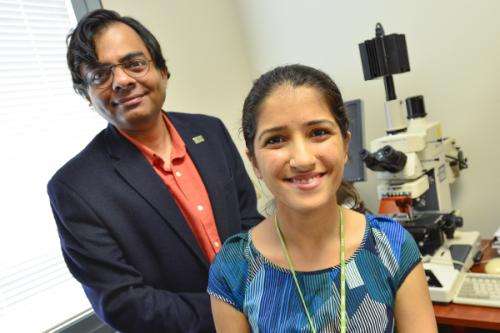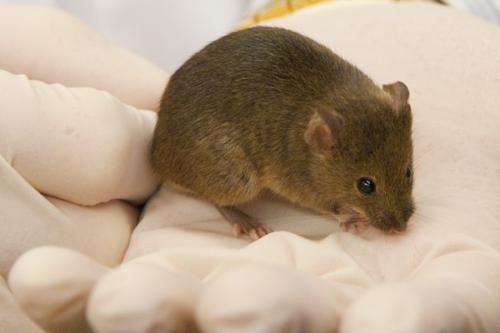One mouse, one patient

Imagine a type of personalized treatment where mice serve as surrogates to treat human disease.
A newly emerging approach investigating the development of mouse "avatars"—named after the virtual characters in online games – involves implanting tumor samples from patients into immunodeficient mice where the human tumors grow. The mice are propagated so that subsequent generations can be used to test drug combinations to find the most effective regimen for their patient counterpart. The mouse avatars could help tailor the treatment to the individual patient, eliminating the harmful side effects and costs associated with non-targeted chemotherapies.
"The opportunity for patients and doctors to create 'Mouse Avatars' and their utilization to guide therapy, assess drug responses to predict chemoresistance and attenuate drug toxicity in itself is a great leap in clinical medicine," USF Health researchers evaluating avatar therapies concluded in a recent paper in the journal Cancer Letters.
However, "the technique does not come without its limitations and pitfalls," the authors also point out.
Vrushank Davé, PhD, assistant professor in the USF Health Department of Pathology and Cell Biology, authored the review paper with doctoral student Prerna Malaney and Santo Nicosia, MD, a USF distinguished professor.
Moving beyond the traditional mouse model
Experiments using mouse models of human disease have been done for decades, but techniques for implanting people's tumors into mice have improved in the last few years.
Much work remains before mouse avatars become mainstream in cancer therapy, but Dr. Davé said patient-derived tumor xenografts, or PDTX, offer promise to more accurately predict how well drugs will work in a particular individual.
That's because the tumor implanted in the mouse more accurately mimics the patient's own genetic variations. These genetic variations among patients influence clinical trial results, and patients in the trials often do not represent the heterogeneity associated with the increasing racial and ethnic diversity in our population, Dr. Davé said.

"So, a drug may or may not work as expected for a given patient being treated. The mouse avatar obviates this pitfall, because the genetic background of the patient and the PDTX is the same."
Mouse avatars may be particularly useful in cases where patients are too sick to participate in clinical trials or for patients with rare cancers who have no clinical trial options, Dr. Davé said.
Challenges of perfecting a personalized mouse
Among the challenges of developing a personalized mouse cited by the researchers:
- While the tumor is human, the three-dimensional environment in which the tumor grows—the connective tissue, blood vessels and other surrounding structures – is still mouse-made.
- The cost of growing and testing the mice with combinations of potential anticancer drugs can be prohibitive –thousands of dollars—and is not yet covered by health insurance. But that may change as the xenograft systems continue to improve, patient and clinician interest grows, and more companies commercialize PDTX for drug development and medical treatment.
- It can take months to successfully graft the tumors and generate the test-ready mouse avatars, so many patients may not live long enough to benefit.
Meanwhile at USF, the work done in Dr. Davé's laboratory has implications for advancing the clinical application of mouse avatars.
Using mice to advance cancer stem cell discoveries
His team creates mouse models of lung cancer to study the molecular profile of stem cells that initiate the disease.
These mice have been genetically-engineered to develop lung tumors that mimic the human disease. The researchers isolate cancer stem cells harvested from the mice and then transplant them back into the rodents to study the stem cells' ability to multiply and spread to other parts of body.
"We've seen that cancer stem cells regenerate tumors for multiple generations when engrafted back into the mouse, providing proof of concept that these cells behave like 'seed' cells to continuously grow tumors," Dr. Davé said.
Unlike most cancer cells killed by chemotherapy, radiation therapy or other advanced treatments, cancer stem cells are often not destroyed and lead to relapse, Dr. Davé said. "It's like cutting the grass – you get rid of the blades, but the root remains so the grass grows back."
The next step would be to replicate the USF laboratory's experiments with the regenerated mouse cancer stem cells using stem cells extracted from patients' lung tumors.
If the human cancer stem cells can similarly grow for several generations in mice, the so-called avatar mice would "provide an ideal platform for identifying and targeting a select group of molecules present only in cancer stem cells," Dr. Davé said. "It could help accelerate the drug discovery process in treating lung cancers."

















